
Ellis Island closes on November 12, 1954
Ellis Island closes: On this day in 1954, Ellis Island, the gateway to America, shuts it doors after processing more than 12 million immigrants since opening in 1892. Today, an estimated 40 percent of all Americans can trace their roots through Ellis Island, located in New York Harbor off the New Jersey coast and named for merchant Samuel Ellis, who owned the land in the 1770s.
On January 2, 1892, 15-year-old Annie Moore, from Ireland, became the first person to pass through the newly opened Ellis Island, which President Benjamin Harrison designated as America’s first federal immigration center in 1890. Before that time, the processing of immigrants had been handled by individual states.
Not all immigrants who sailed into New York had to go through Ellis Island. First- and second-class passengers submitted to a brief shipboard inspection and then disembarked at the piers in New York or New Jersey, where they passed through customs. People in third class, though, were transported to Ellis Island, where they underwent medical and legal inspections to ensure they didn’t have a contagious disease or some condition that would make them a burden to the government. Only two percent of all immigrants were denied entrance into the U.S.
Immigration to Ellis Island peaked between 1892 and 1924, during which time the 3.3-acre island was enlarged with landfill (by the 1930s it reached its current 27.5-acre size) and additional buildings were constructed to handle the massive influx of immigrants. During the busiest year of operation, 1907, over 1 million people were processed at Ellis Island.
With America’s entrance into World War I, immigration declined and Ellis Island was used as a detention center for suspected enemies. Following the war, Congress passed quota laws and the Immigration Act of 1924, which sharply reduced the number of newcomers allowed into the country and also enabled immigrants to be processed at U.S. consulates abroad. After 1924, Ellis Island switched from a processing center to serving other purposes, such as a detention and deportation center for illegal immigrants, a hospital for wounded soldiers during World War II and a Coast Guard training center. In November 1954, the last detainee, a Norwegian merchant seaman, was released and Ellis Island officially closed.
Beginning in 1984, Ellis Island underwent a $160 million renovation, the largest historic restoration project in U.S. history. In September 1990, the Ellis Island Immigration Museum opened to the public and today is visited by almost 2 million people each year.
History Channel / Wikipedia / Encyclopedia Britannica / National Park System / Liberty Ellis Foundation.org / George Mason University / NPR.org
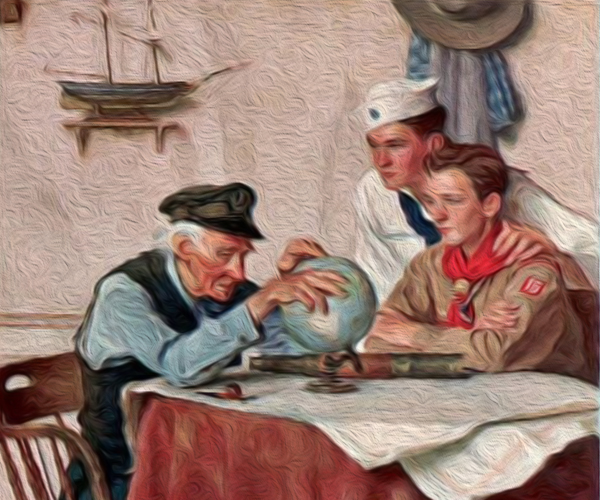
Understanding Military Terminology - Marking
(DOD) To maintain contact on a target from such a position that the marking unit has an immediate offensive capability. Joint Publications 3-09.3 (Close Air Support)

The Old Salt’s Corner
Captain Richard W. Wooley
Quartermaster Professional Bulletin-December 1988
Note: At the time this article was written the term Graves Registration was used for what is now call Mortuary Affairs.
Arlington National Cemetery is not the only resting place for “Unknown Soldiers”. Countless American soldiers have died defending their way of life throughout the history of this nation; many of their graves are marked with a single word, “unknown”.
The Civil War provided the first recorded incident of American soldiers making an effort to ensure that their identities would be known should they die on the battlefield. Their methods were varied, and all were taken on a soldier's own initiative. In 1863, prior to the battle of Mine's Run in northern Virginia, General Meade's troops wrote their names and unit designations on paper tags and pinned them to their clothing. Many soldiers took great care to mark all their personal belongings. Some troops fashioned their own “ID” (identification) tags out of pieces of wood, boring a hole in one end so that they could be worn on a string around the neck.
The commercial sector saw the demand for an identification method and provided products. Harper's Weekly Magazine advertised “Soldier's Pins” which could be mail ordered. Made of silver or gold, these pins were inscribed with an individual's name and unit designation. Private vendors who followed troops also offered ornate identification disks for sale just prior to battles. Still, despite the fact that fear of being listed among the unknowns was a real concern among the rank and file, no reference to an official issue of identification tags by the Federal Government exists. (42% of the Civil War dead remain unidentified.)
The first official advocacy of issuing identification tags took place in 1899. Chaplain Charles C. Pierce, who was tasked to establish the Quartermaster Office of Identification in the Philippines, recommended inclusion of an “identity disc” in the combat field kit as the answer to the need for standard identification. The Army Regulations of 1913 made identification tags mandatory, and by 1917, all combat soldiers wore aluminum discs on chains around their necks. By World War II, the circular disc was replaced by the oblong shape familiar to us today, generally referred to as “dog tags”.
Since then, some myths have arisen in connection with the purpose of the identification tags. One of the more common myths involves the reason for the notch on the tag issued between 1941 and the early 1970's. Battlefield rumor held that the notched end of the tag was placed between the front teeth of battlefield casualties to hold the jaws in place. No official record of American soldiers being issued these instructions exists; the only purpose of "the notch" was to hold the blank tag in place on the embossing machine. The machine used at this time doesn't require a notch to hold the blank in place, hence, today's tags are smooth on all sides.
The sole purpose of the identification tag is stated by its designation. Tags found around the neck of a casualty, and only those tags found around the neck, stay with the remains at all times tags found any place besides around the neck are made note of in the Record of Personal Effects of Deceased Personnel, and placed in an effects bag. They are not removed unless there is a need to temporarily inter the remains. If there is only one tag present, another is made to match the first. If the remains are unidentified, two tags marked “unidentified” are made. One tag is interred with the individual, the other placed on a wire ring in the sequence of the temporary cemetery plot. This enables Graves Registration personnel to make positive identification of remains during disinterment procedures; when the remains are disinterred, the tag on the wire ring is removed and placed with the matching tag around the neck.
The Department of the Army has developed and is currently testing a new tag, which will hold 80% of a soldier's medical and dental data on a microchip. Known as the Individually Carried Record, it is not intended to replace the present tag, but rather to augment it as part of the “paperless battlefield” concept. This development is in keeping with the Army's dedication to positively identify each and every fallen soldier.
The Armed Forces make every possible effort to eradicate discrepancies and remove doubts about casualties, not least those doubts that families may hold concerning the demise of their loved ones. In recent years, a near perfect record of identifying service members who have died in the line of duty has been achieved, a far cry from the 58% rate of identification that stood during the Civil War. The ID tag has, been and remains a major part of the reason for this record. Are you wearing your ID tags today? Too many military personnel, particularly those who are part of the peacetime force stationed in CONUS (Continental United States), forget how vital those tags can be, forget that as soldiers they are always on the line. Wearing your ID tags is one of the easiest actions you can make towards achieving total readiness, so take those tags out of your dresser and put them around your neck. Remember - the simple information contained on that small aluminum tag can speak for you if you can't speak for yourself; it could mean the difference between a positive identification and an uncertain future for those who survive you, should your identity be “...known only to God.”
~ U.S. Army Quartermaster Foundation - Fort Lee, Virginia

“I’m Just Sayin’”
How can you make sure you never miss your target? Shoot first, and whatever you hit, call it the target.

“Thought for the Day”
“A closed mouth gathers no feet.”
“A rolling stone gathers no moss”
~ Anonymous

“What I Have Learned”
“Some things are worth waiting for.”
~ Anonymous

Bizarre News (we couldn’t make up stuff this good – real news story)

A 27-year-old owner of the Hookah House in Akron, Ohio, was fatally shot by an Akron narcotics officer during an October raid for suspected drugs. The man had his arms raised, according to the police report, but dropped one hand behind him, provoking an officer to shoot.
Only afterward did they learn that the man was unarmed; they concluded that he was reaching only to secure or to push back the packet of heroin he felt was oozing out of its hiding place in his buttocks.
Akron Beacon Journal (09/22/2015 - updated 09/23/2015)

Mr. Answer Man Please Tell Us: Why Is There An “R” in Mrs.?
There are a couple of odd things about the title Mrs. First, the word it stands for, missus, looks strange written out that way in full. In fact, except in the jokey context of “the missus”, meaning the wife, you almost never see it written out. “Missus Claus” looks far more awkward than “Mister Rogers”. Second, the abbreviation has an “r” in it, and the word doesn’t. Why is there an “r” in Mrs.?
Originally, Mrs. was an abbreviation for mistress, the female counterpart of master. There were various spellings for both forms—it might be maistresse/maistre or maystres/mayster—and variation in pronunciation too. The word mistress had a more general meaning of a woman who is in charge of something. A governess in charge of children was a mistress, as was a woman head of a household. The abbreviated form was used most frequently as a title for a married woman.
Eventually, the title form took on a contracted, “r”-less pronunciation, and by the end of the 18th century “missis” was the most acceptable way to say it. (A 1791 pronouncing dictionary said that to pronounce it “mistress” would “appear quaint and pedantic”.) The full word mistress had by then come to stand for a paramour, someone who was explicitly not a Mrs.
The pronunciation of Mr. also underwent a change, from “master” to “mister”. But there was already a written word mister, meaning an occupation, trade, or skill (related to métier) so that when Mr. was written out that way it didn’t look awkward. Missus, however, was first written out as a rough approximation of lower class dialect, the way servants in Dickens talked of their mistresses, for example. Even though everyone was pronouncing Mrs. as “missus”, they avoided writing it that way because it was just too casual. It would be like writing Ms. as Miz. Sometimes a title is not an abbreviation for a word, but a word all of its own.
Mental Floss
• Reddit
• Wikipedia
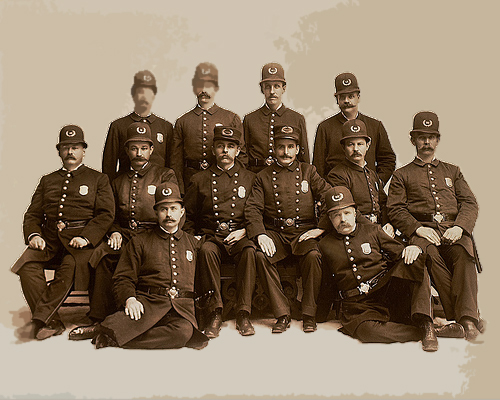
Where Did That Saying Come From?
“COPPER:”
The old word cop meant grab or capture so in the 19th century policemen were called coppers because they grabbed or caught criminals.Wikipedia

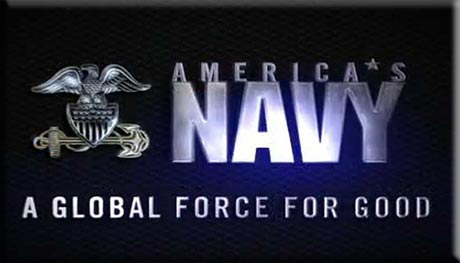
NAVSPEAK aka U.S. Navy Slang
Happy Sock: A soft sock brought for personal use by a sailor underway, or a Seabee in the field.
Island: The superstructure of an aircraft carrier, which is on the starboard side of the landing area.
JG: Short for Lieutenant Junior Grade, which is abbreviated LT (j.g.)
JSI: Junior Staff Instructor.
Kloosh: Anything that, when you pick it up between your hands, lean over the side of the ship, and release it, makes a kloosh sound as it hits the water and sinks forever. In short, trash or anything else unwanted, as in “that broken chair is a kloosh!”


Just for you MARINE
Grinder: A large field, usually paved, upon which formations and parades are held. See Parade Deck.
Grog: An alcoholic beverage issued to sailors and Marines aboard ship until the Civil War. The recipe varied but was most commonly half rum and half water. It served as a preventive medicine and enabled the water supply to last longer as brackish water could be used as grog but not used straight. See Splice the Main Brace.
Ground Guide: A person who walks in front of a tank in congested areas like tank parks to guide the tank by the use of recognized and standardized hand signals.
Ground Pounder: An infantryman, a grunt.
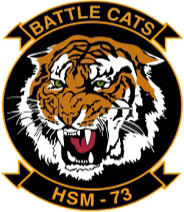
Naval Aviation Squadron Nicknames
HSM-73 - Helicopter Maritime Strike Squadron 73: “Battlecats”
NAS North Island, California

Aircraft Nicknames
LOH-58 Kiowa: Loach (from the Light Observation Helicopter (LOH) designation) is a family of single-engine, single-rotor, military helicopters used for observation, utility, and direct fire support. Bell Helicopter manufactured the OH-58 for the United States Army based on its Model 206A JetRanger helicopter.
The OH-58 has been in continuous use by the U.S. Army since 1969.
Bell Helicopter / Wikipedia

The Strange, Mysterious or Downright Weird

The walls are fighting back in San Francisco, at least when it comes to public urination! The city has now installed new urine resistant walls that will actually repel urine back at the person that chose to urinate in public.
There are now nine public walls in the city that have been painted with urine resistant paint that causes the urine to spray back splashing all over the culprits pants and shoes leading to quite an embarrassing scenario. Currently, the city of San Francisco spends about $14 million per year steam cleaning the waste off of the public walls and streets. They feel the new urine resistant walls are a perfect way to fight back and cut spending.
The walls are adorned with signs that read “Hold it! This wall is not a public restroom. Please respect San Francisco and relive yourself in an appropriate place.” The sign does not mention anything about the walls being coated in urine resistant paint, so anyone that chooses to violate the sign will be in for quite a surprise.
It seems that public urination is quite a problem in the city of San Francisco as it has actually left some of the city’s streets completely soaked in pee. Public urination was completely banned in the city back in 2002, but still continues to be an issue despite fines in upwards of $500 for violations.
Nothing like a surprise golden shower to make the public urinators in San Francisco clean up their act for good.
San Francisco Chronicle


SONG FACTS

“Play That Funky Music” - Wild Cherry
Album: Wild Cherry
Released 1976 
Wild Cherry front man Rob Parissi wanted to write a hit song, and his plan was to copy from the best. He subscribed to Billboard magazine, which charts the hit songs. When it arrived each week, he would pick out a song or two to copy, making it just different enough to avoid getting sued. After some time doing this, he wrote the one that became his #1 hit. The song he copied: “Fire”  by The Ohio Players (listen especially to the bassline and vocal styling’s).
by The Ohio Players (listen especially to the bassline and vocal styling’s).
Wild Cherry was a hard rock band. They had a regular gig at the 2001 Club, and with disco big at the time, their sound didn't go over well. After one show, a black audience member shouted, “Play some funky music, white boy.” Parissi decided they should, and wrote down the phrase on a bar order pad. They recorded it in Cleveland with a disco sound: drum and bass mixed way up front. The band was concerned about the lyrics, but Parissi insisted on keeping them.
This was going to be the B-side of Wild Cherry's cover of the Commodores' “I Feel Sanctified”  . When they heard it, the owners of their record label suggested that the B-side become the A-side. The song sold over two million copies, but was Wild Cherry's only hit.
. When they heard it, the owners of their record label suggested that the B-side become the A-side. The song sold over two million copies, but was Wild Cherry's only hit.
Vanilla Ice released a cover of this song as the follow-up to his massive hit “Ice Ice Baby”  . His version hit #4 in the U.S., but was his last hit. Ice did not credit Robert Parissi for writing this, so when Parissi sued Ice, he received a large settlement.
. His version hit #4 in the U.S., but was his last hit. Ice did not credit Robert Parissi for writing this, so when Parissi sued Ice, he received a large settlement.
Rob Parissi got the idea for the group's name from a box of cough drops he saw when he was in the hospital.
This song was a topic of conversation on the 2015 episode of The Big Bang Theory, “The Skywalker Incursion”. When the song comes on the car radio, the scientist character Sheldon determines that the song is funky, and that it is requesting a white boy to play funky music. Seeing it as an example of Russell's Paradox, he asks, “Do you think this song is the music the white boy ultimately plays?”
For certain plot lines, only this song will do. TV series that have used it include Scandal and The Office; movies include
Mystery Men (1999),
Whatever It Takes (2000),
Evolution (2001),
Undercover Brother (2002),
Malibu's Most Wanted (2003),
Scooby-Doo 2: Monsters Unleashed (2004) and
Obsessed (2009).
Rob Parissi - Wild Cherry official site / Billboard / Song Facts / Wikipedia
Image: “Wild Cherry (album)” by Wild Cherry

Trivia
● John Adams and Thomas Jefferson were the only two men who signed the Declaration of Independence who also went on to become President of the United States.
● Billiards was once a lawn game played outdoors, which is why today’s pool tables have a green felt cover.
● Although estimates vary, humans blink their eyes around five million times each year.

A Test for People Who Know Everything
Why did the state of Texas cancel this license place even though the customer had been using it for 3 years with the blessing of the state?
● Answer for People Who Do Not Know Everything, or Want to Verify Their AnswerTexas.gov
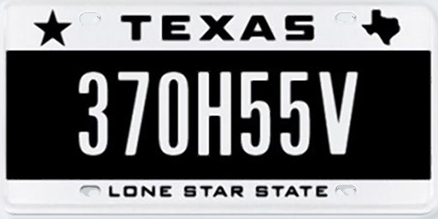
Answer to Last Week's Test
What was the title of the first single song issued by singer/songwriter Cat Stevens?
Answer: “I Love My Dog” Wikipedia

Joke of the Day
A 60-year-old man went to a doctor for a check-up. The doctor told him, “You're in terrific shape. There's nothing wrong with you. Why, you might live forever; you have the body of a 35-year-old. By the way, how old was your father when he died?”
The 60-year-old responded, “Did I say he was dead?”
The doctor was surprised and asked, “How old is he and is he very active?”
The 60-year-old responded, “Well, he is 82 years old and he still goes skiing three times a season and surfing three times a week during the summer.”
The doctor couldn't believe it. So, he asked, “Well, how old was your grandfather when he died?”
The 60-year-old responded, “Did I say he was dead?”
The doctor was astonished. He said, “You mean to tell me you are 60 years old and both your father and your grandfather are alive? Is your grandfather very active?”
The 60-year-old said, “He goes skiing at least once a season and surfing once a week during the summer. Not only that,” said the patient, “my grandfather is 106 years old, and next week he is getting married again.”
The doctor said, “At 106-years, why on earth would your grandfather want to get married?”
His patient looked up at the doctor and said, “Did I say he wanted to?”
Joke Buddha


























